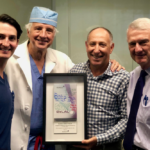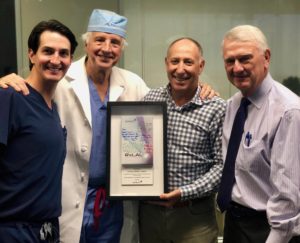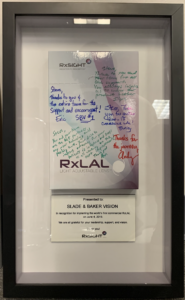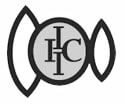Cataract surgery houston,Laser cataract surgery houston,Light adjustable lens

Frequently Asked Questions about the Light Adjustable Lens
We recently shared that we were the first to debut the Light Adjustable Lens…and this time it was not just the first in our city, or our state. It is one of our biggest firsts. The first worldwide.
At the bottom of this article is a photo of Dr. Stephen Slade, Dr. Bennett Walton and Dr. Richard Baker being presented the plaque by RxSight.
Since we were the first, we do feel the responsibility to share from our experience with the lens, what makes this technology different, great and what patients should know. So here goes.
Question: What makes the technology different from a regular IOL?
Answer: It lets patients try out their new vision in an adjustable fashion, rather than permanently accepting a non-adjustable lens.
Question: What is different “after”…are there more post ops?
Answer: There are some UV Protective glasses that must be worn. And yes, there are more post-ops because we now have the ability to adjust and then lock-in the lens power.
Question: How many post ops are needed?
Answer: Patients need to be seen at one day, then 1-2 weeks. Around week 2, the light treatment visits can start for most patients whose eyes have stabilized. The average number of light treatment visits is 3. Typically, by 4-5 weeks post-op, the lens is locked in, and people can stop wearing the UV protective glasses.
Question: What happens at these post ops vs. what happens at regular cataract surgery post ops?
Answer: The patients now have a refraction to measure the vision and a discussion with the doctors to re-evaluate the target for example: how near, how far, etc., they would like their vision to be, now that they’ve been able to try it without the cataract in the way!
Question: Was Slade & Baker Vision really the first to debut the Light Adjustable Lens Technology?
Answer: Yes. We completed the world’s first commercial cases and the first cases of two of the clinical trials. We completed the first commercial case in the world on June 4, 2019. *see photo below.
Question: How were we involved with any of the research that led to the Light Adjustable Lens approval?
Answer: Yes. We completed the RXSight clinical trial in post-LASIK patients, and we are also enrolling currently in an extended-depth-of-focus LAL study.
Question: What are ideal patients for the technology?
Answer: People who want the best precision possible and can wear UV protecting glasses (which we provide) until it is time to adjust and lock-in the vision. This is especially good for patients who prefer monovision or blended vision, in which one eye sees well at distance, and the other is focused to intermediate or near. And if you’re not sure about monovision but want to try it without the cataracts blurring the vision, the adjustability allows the monovision to generally be placed and/or reversed.
Question: Why would I pick the Light Adjustable Lens over other options?
Answer: It lets patients try out their new vision in an adjustable fashion, rather than permanently accepting a non-adjustable lens.







